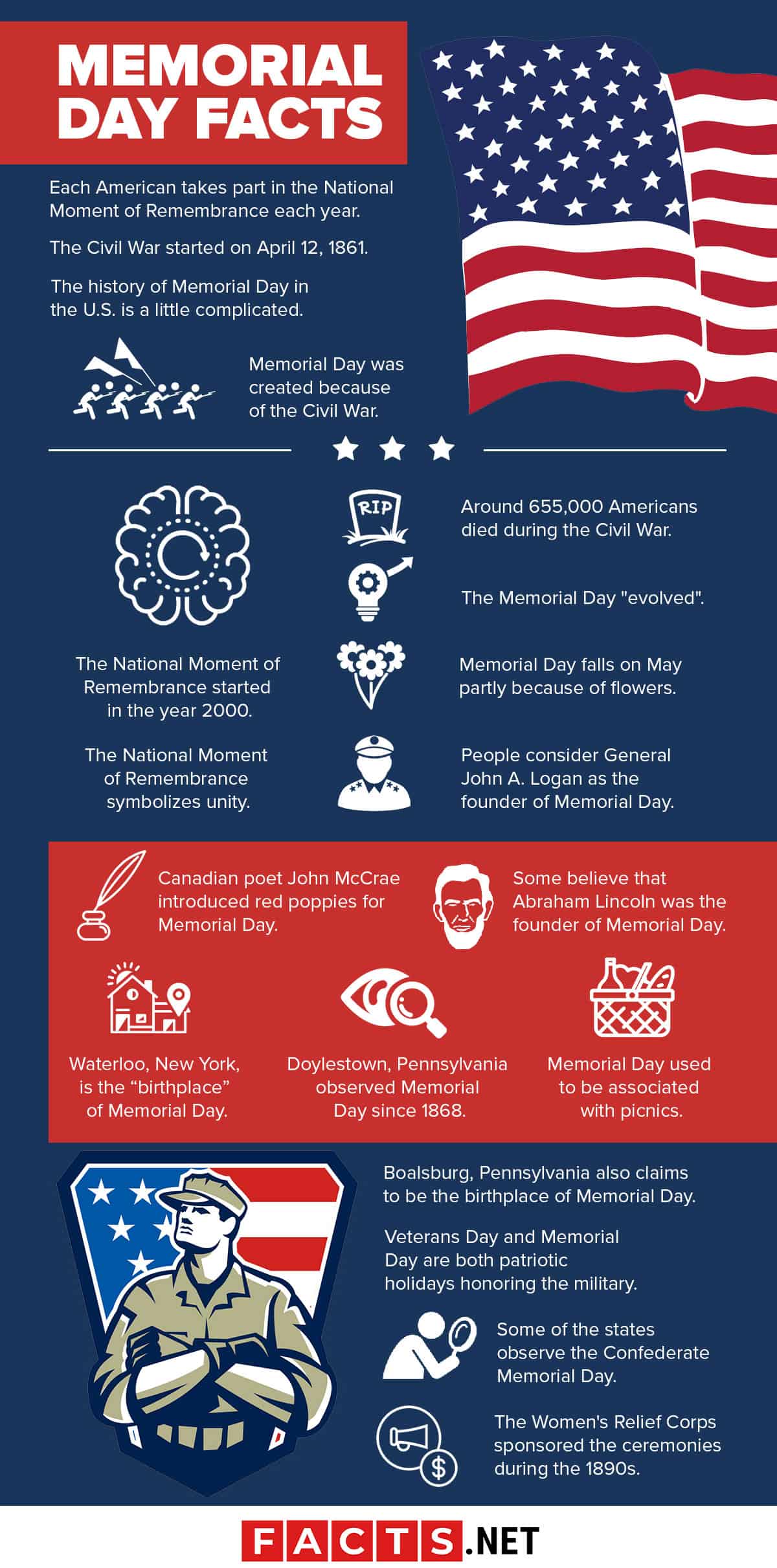7 Fascinating Facts About Memorial Day's Name Change

Memorial Day, a day dedicated to honoring and mourning the military personnel who died while serving in the United States Armed Forces, has undergone a name change throughout its history. Initially known as "Decoration Day," the holiday's evolution in nomenclature offers a fascinating glimpse into its significance and the shifting societal attitudes towards remembrance. Here, we delve into seven intriguing facts about how Memorial Day got its name and why it was changed.
The Birth of Decoration Day

The roots of Memorial Day date back to the aftermath of the Civil War, which remains the deadliest conflict in American history. The holiday was originally termed Decoration Day because of the widespread practice of decorating the graves of those who had died in the war with flowers and flags.
- The first Decoration Day was observed on May 30, 1868, by proclamation of John A. Logan, national commander of the Grand Army of the Republic.
- The date was chosen because flowers would be in bloom all over the country, ensuring a colorful tribute to the fallen soldiers.
- By the late 19th century, various towns and cities began claiming to have been the first to celebrate Decoration Day, each with its own stories and traditions.

Shift in Significance

Over time, the meaning of Memorial Day expanded beyond the Civil War to encompass American military sacrifices from all conflicts.
- After World War I, ceremonies for those lost in subsequent wars were also integrated into the celebrations.
- The holiday began to symbolize the collective memory of all American war dead, not just from the Civil War.
The Name Change

The formal name change from Decoration Day to Memorial Day did not occur until after World War II:
- The move from “Decoration Day” to “Memorial Day” was part of a broader push to include all fallen American soldiers in the remembrance, regardless of the conflict they served in.
- In 1966, President Lyndon B. Johnson proclaimed Waterloo, New York, as the birthplace of Memorial Day, further cementing its transition to a more national and inclusive holiday.
- In 1968, Congress passed the Uniform Monday Holiday Act, which established Memorial Day as the last Monday in May to create a three-day weekend for federal employees.
The Political Dimension

The transition from Decoration Day to Memorial Day was not just semantic but also reflected political changes and social movements:
- The Vietnam War era saw significant anti-war sentiment, which likely influenced the push for a more inclusive name that could transcend the specific conflict.
- By calling it Memorial Day, the nation aimed to honor not only those who fell in battle but also all service members who died during their service, including in peacetime.
Legislation and Controversy

The shift from Decoration Day to Memorial Day came with legislative actions, but it wasn’t without controversy:
- Some veterans organizations, including the Veterans of Foreign Wars (VFW), initially opposed the name change and the shift to the last Monday in May, arguing it would diminish the solemnity of the occasion.
- The act of moving Memorial Day from May 30 to a Monday created a three-day weekend, which some felt commercialized the holiday, turning it into another opportunity for sales and vacations.
The Role of Media and Culture

The media and pop culture played a significant role in the acceptance and normalization of the new name:
- News outlets and media coverage increasingly referred to the holiday as Memorial Day, which helped to solidify the name change in the public consciousness.
- Films, TV shows, and literature about Memorial Day further embedded the new name in American culture, reflecting contemporary themes and feelings.
The Evolution Continues

The name change hasn’t been the only evolution for Memorial Day:
- Memorial Day has seen various commemorative practices evolve, including the National Moment of Remembrance, established by Congress in 2000, where people are encouraged to pause at 3:00 p.m. local time for a minute of silence to honor the fallen.
- The Holiday has also seen the addition of new traditions like the wearing of red poppies in honor of veterans.
🚩 Note: Even though the name Memorial Day is widely recognized, Decoration Day traditions still persist in some communities, reminding us of the holiday's original purpose.
From its beginnings as a somber day of decorating graves to the present, Memorial Day has transformed in its purpose and meaning. The evolution in its name reflects a nation's collective memory and the desire to honor all those who made the ultimate sacrifice, regardless of the war they fought or the circumstances of their service. The spirit of remembrance remains unchanged, even if the way we remember has adapted over time.
Why was the name changed from Decoration Day to Memorial Day?

+
The name was changed to reflect the inclusive remembrance of all American war dead, not just those from the Civil War, and to emphasize the national mourning over individual battlefield honors.
When did Memorial Day officially become a federal holiday?

+
Memorial Day became an official federal holiday in 1971, after the Uniform Monday Holiday Act was passed in 1968.
How should one observe Memorial Day?

+
Traditional ways to observe Memorial Day include visiting cemeteries and memorials, honoring fallen soldiers, participating in parades, flying the flag at half-staff until noon, and participating in the National Moment of Remembrance at 3:00 p.m.
What is the significance of wearing poppies on Memorial Day?

+
Red poppies are worn in memory of those who died in wars, a tradition that stems from the poem “In Flanders Fields” where poppies grew over the graves of fallen soldiers during World War I.
Does Memorial Day mark the official start of summer?

+
Yes, Memorial Day weekend is often considered the unofficial start of summer, but this is more of a cultural perception rather than an official designation. Summer, by calendar, begins on the summer solstice in June.



